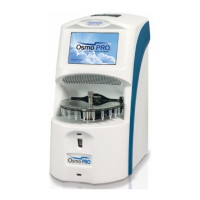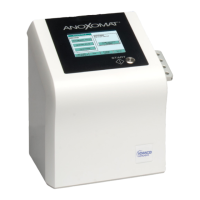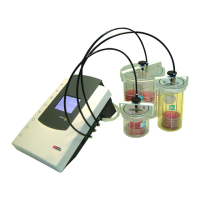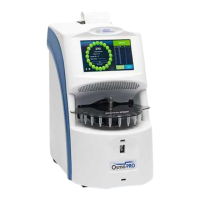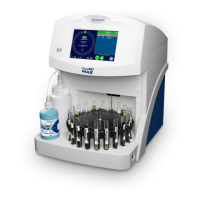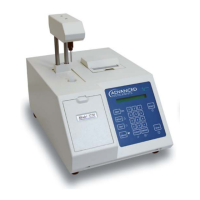62
OsmoTECH® Single-Sample Micro-Osmometer User Guide
Appendix E: Supplemental Network
information
You can connect your instrument to use one of the
following systems to exchange information:
• Open Platform Communications Unified Architecture
(OPC-UA)
• Local area network (LAN)
• Laboratory Information System (LIS) to exchange
The instrument supports bidirectional and unidirectional
communication protocols.
1,2
NOTE: For more information, refer to the OsmoTECH PRO
Data Management Guide (p/n CL00122).
OPC-UA
Use the OPC-UA feature to set up an OsmoTECH PRO as
an OPC-UA server to send data to OPC-UA clients.
OPC-UA clients can access test results, test details, and
other test, user, and system information from the
instrument;
Setting up OPC-UA
1. Connect the instrument to the network with the
Ethernet connection on the rear of the instrument.
2. Set up the OPC-UA connection (see Setting up
OPC-UA communication).
LAN
The OsmoTECH PRO can communicate over a LAN using
a static IP address or by connecting to a DHCP server.
Configuring the LAN connection
1. Connect the instrument to the network with the
Ethernet connection on the rear of the instrument.
2. Set up the LAN connection (see Configuring a LAN
connection).
The physical network connection must ensure that the
host computer can communicate with the instrument’s
computer.
For best results, use a dedicated, direct Ethernet
connection and assign a static IP address to the
instrument.
LIS
The LIS host computer must be running software
configured to communicate with the instrument per the
separate description in the LIS Interface Specification
section of the
OsmoTECH Product Family Data
Management Guide (p/n CL00122).
The communication link allows the host computer to
transmit work orders to the instrument and accept test
results transmitted from the instrument. The host work
orders provide sample information to the instrument,
including which test to perform.
The instrument can be configured to automatically
transfer available results to the host, or manually transfer
results to permit the operator time to review the data.
In bi-directional mode, the instrument can receive work
order information from the LIS as needed. The LIS may
initiate sending work order information to the instrument
in advance of sample runs. The information is parsed and
stored in the system for later use.
Setting up LIS communications
1. Configure the instrument’s computer for a LAN
connection.
2. Set up the LIS connection (see Connecting to a LIS).
1 CLSI LIS01-A2 Specification for Low-Level Protocol to Transfer Messages between Clinical Laboratory Instruments and Computer Systems; Approved Guideline-Second Edition
(2008).
2 CLSI LIS2-A2 Specification for Transferring Information between Clinical Laboratory Instruments and Information Systems; Approved Guideline-Second Edition (2004). Disclaimer:
CLSI standards were used for software development purposes only. OsmoTECH PRO is not for patient diagnostic use.

